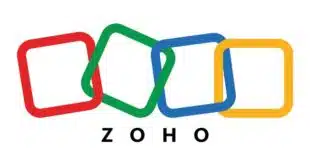Online-banking-software provider Corillian Corp. is planning to sell banks on housing their own bill-payment data and using a variety of processors, rather than relying on those processors as exclusive providers of data-warehousing and transaction processing. Hillsboro, Ore.-based Corillian, which earlier this year acquired InteliData Technologies Corp., a vendor of data-warehousing software, says it has between 50 and 60 bank clients for data warehousing now, with three relying on the capability to route transactions to a variety of processors according to cost in a process known as least-cost routing. Alex Hart, Corillian's chief executive, says the number of clients doing least-cost routing for bill payments could double within a year. Most banks depend on third-party bill-payment processors for warehousing, or the storage and monitoring of data related to electronic bill payments, as well as processing. In setting up warehousing capability, banks cut that tie and free themselves to send transactions to any number of processors as dictated by price or other considerations, Hart says. “The next step [after setting up a data warehouse] is least-cost routing,” he says, adding that most banks are reluctant to discuss their plans, making it difficult to project volumes. “It's been a competitive edge,” he says. As an example, Bank One, now part of JPMorgan Chase & Co., has cut its bill-payment processing cost in half since moving to least-cost routing based on a data warehouse it built internally with Corillian's help more than two years ago, according to Hart. Ronald W. Averett, chief executive of Princeton eCom Corp., a Princeton, N.J.-based processor, estimates warehousing alone can chop processor fees by 25% to 35% annually. Averett, however, cautions only the largest 20 banks control enough volume to make differentiated processing worthwhile, since the smaller the transaction batches become, the less they enjoy economies of scale. Hart agrees, though he contends the warehouse providers are driving that threshold down. “There's a point at which it doesn't make sense to do least-cost routing,” he says. “But that's getting lower and lower every day.” Also, those top 20 banks control from 50% to 60% of all electronic bill-payment volume, Averett estimates. Bill-payment processors like CheckFree Corp., which manage data warehouses for some clients and as a result enjoy exclusive volume flows from them, are most threatened by least-cost routing, says Hart, a former CheckFree executive. But Matthew S. Lewis, executive vice president and general manager of the electronic commerce division at CheckFree, argues these banks benefit by allowing the company to manage both warehousing and processing. “Least-cost routing costs you more,” he says. “You have to commit yourself to building what we do every day, and if you operate at our level of quality it's going to cost you more.”
Check Also
AI Engine Perplexity Adds PayPal to Its Commerce Suite
Artificial intelligence engine Perplexity.AI will soon enable PayPal and Venmo payments for products, travel, and …





